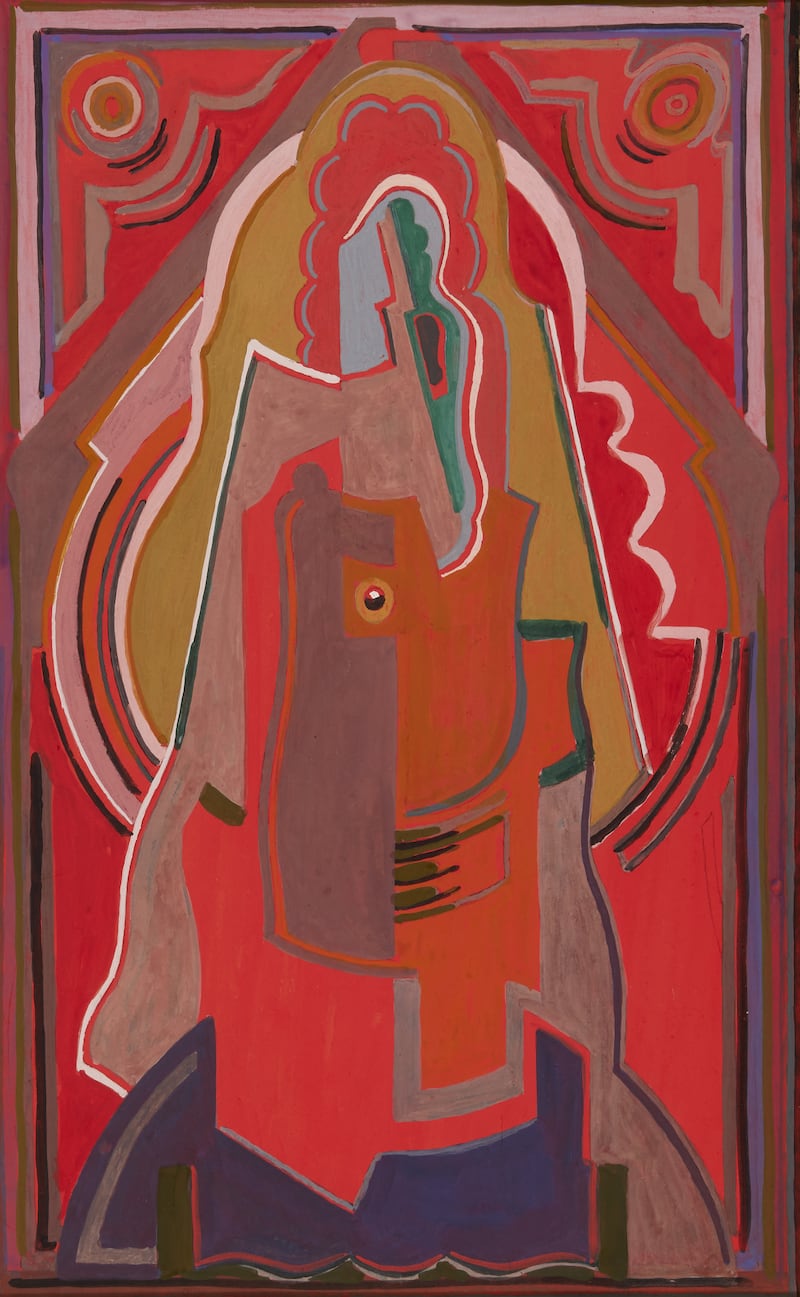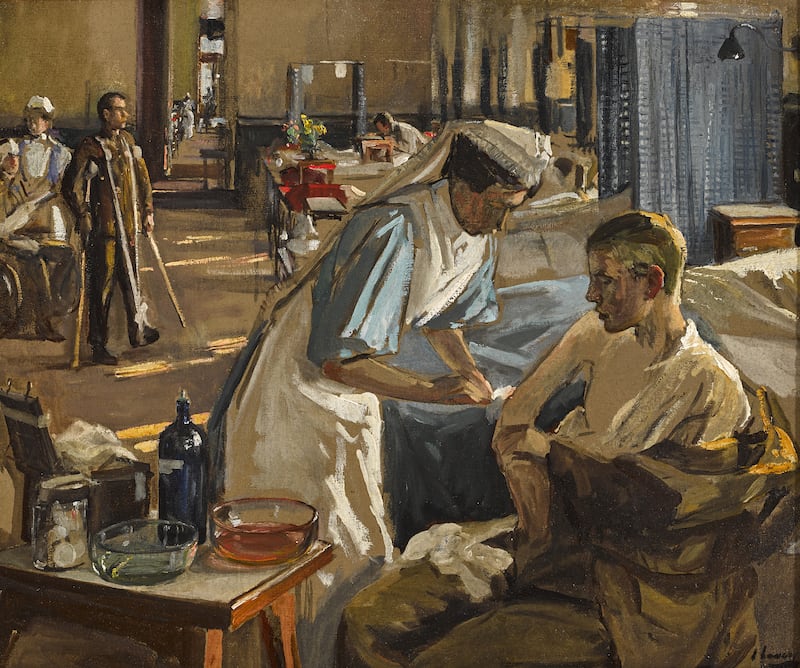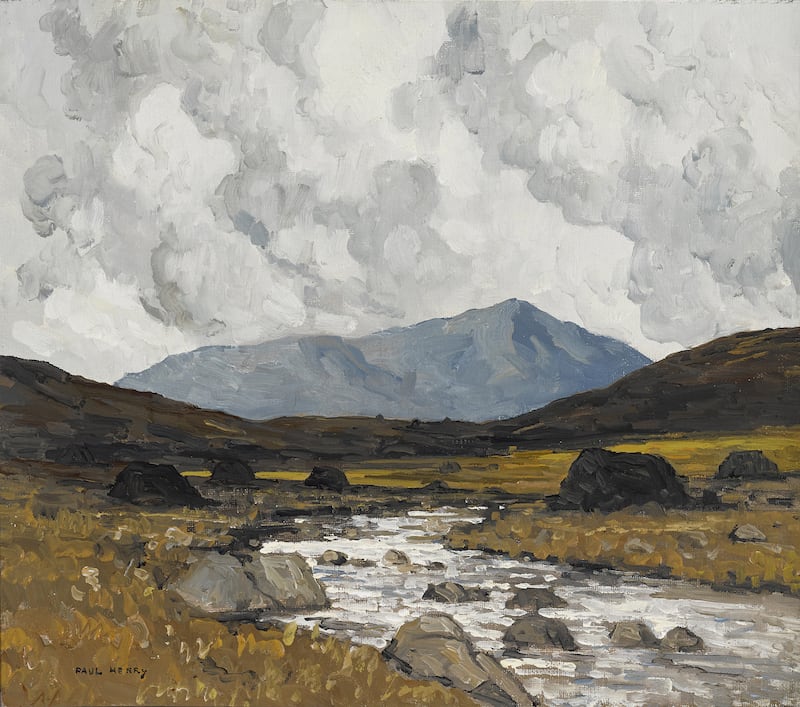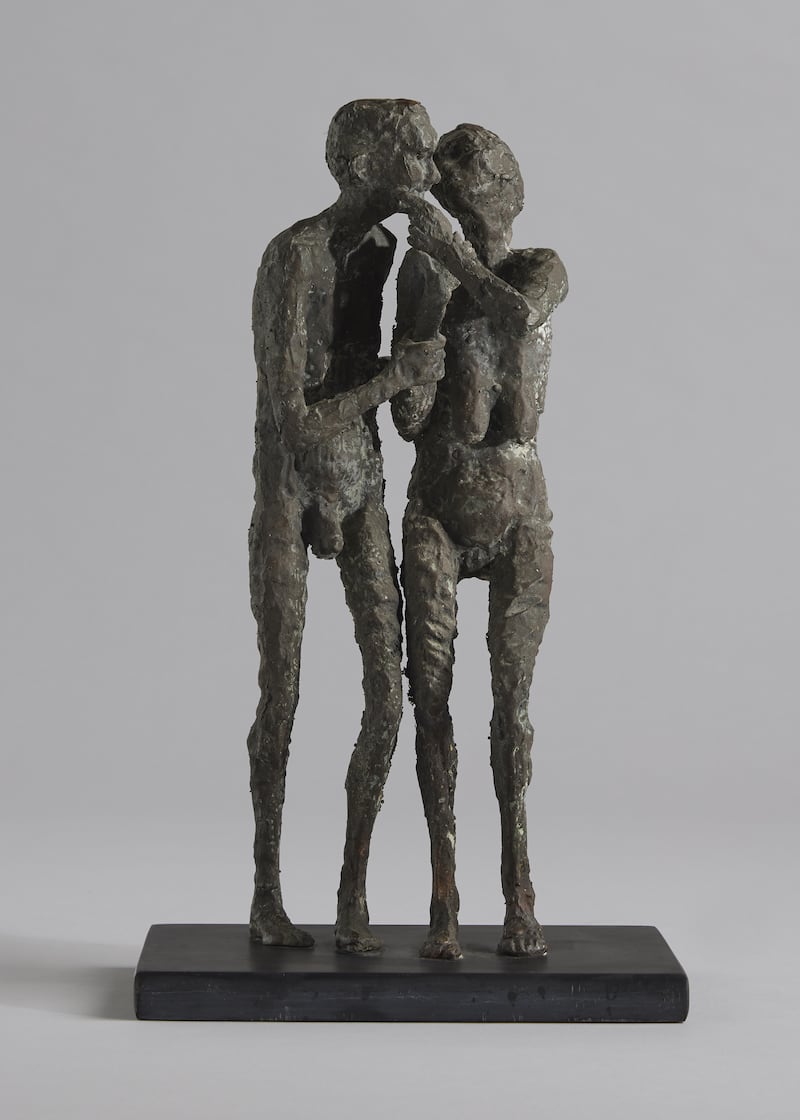Two of Ireland’s trailblazing modernist painters, Mary Swanzy and Mainie Jellett, join a host of the country’s greatest artists at the upcoming Whyte’s Important Irish Art sale, which will take place in a live online sale at the Freemasons’ Hall on Molesworth Street in Dublin on Monday December 4th, with viewings from this coming Monday.
Mary Swanzy’s Sur le Bord de la Forêt (€25,000-€35,000) was exhibited in the landmark Voyages retrospective at the Irish Museum of Modern Art (Imma) in 2018, an exhibition that described Swanzy as “arguably Ireland’s first modernist painter”. The accompanying catalogue at that time, under the heading “surrealism”, included a quote from The Irish Times from 1934, which opened with: “Miss Swanzy may be described as a surrealist working in a cubist convention.”

Her contemporary Mainie Jellett, also a pioneer of modernism, is represented by Abstract Composition from 1929. Estimated at €10,000-€15,000, the work is described “as a wonderful example of the artist’s cubist style” and was included in her retrospective exhibition at the Hugh Lane Gallery in 1962.
Further highlights of the sale include a winter scene in oil by Sir John Lavery. Switzerland [Hazel and Alice], executed in 1913, is expected to achieve in the region of €180,000 to €220,000. Lavery was the only Irishman to receive the freedom of both Dublin and Belfast in the interwar period, and he is the current subject of a major exhibition entitled Lavery. On Location at the National Gallery of Ireland.
‘It’s time to move on’: Unease is growing among my friends in the tech sector
First Look: Dublin’s newest cocktail bar aims to ‘bring the glamour back to O’Connell Street’
Trump’s tariffs: when is the announcement and what can Ireland expect today?
UK pension buyback: I cannot find my national insurance number - what should I do?
The curator of the exhibition at the National Gallery, art historian Prof Kenneth McConkey, explains in catalogue notes how, in February 1912, Lavery was commissioned to paint the British royal family at Buckingham Palace, and a date was set for the following February. Thus, the annual sojourn to the Lavery house in Tangier was cut, with the family opting instead to winter at the ski resort of Wengen in Switzerland – a move, according to notes, that “proved to be one of the most concentrated painting episodes of Lavery’s life”. One of four featuring Lavery’s second wife, Hazel, and his stepdaughter Alice, “it is the remarkable spontaneity of the present canvas that makes it stand out among the Wengen group”, according to Prof McConkey.
![Sir John Lavery, Switzerland [Hazel and Alice] €180,000-€220,000](https://www.irishtimes.com/resizer/v2/ULN6627I7RGGFLYE2GX6I5ZKSQ.jpg?auth=b8e56e3da517d718c4da1fa3d4fab7e8cd6bf87781f4c6c1a55e2c96ab23c1a5&width=800&height=474)

A second work by Lavery, London Hospital, 1914 (€60,000-€80,000) is equally impactful. Apparently, the artist had decided the best way for him to support the war effort was through his work, “but government restrictions blocked his early ambitions to equip a motorbus and drive to the western front”. Instead, he arranged to paint the wounded at London Hospital – which was the first clinic to receive casualties in the early weeks of the war. It is believed that Lavery painted two scenes at the hospital, along with the one in Whyte’s sale; Wounded, London Hospital, 1915 is currently on show in the National Gallery of Ireland and part of the Dundee Art Galleries and Museums collections.
Interestingly, Lavery then donated sketches and copyright of this later work to the hospital, so that images could be sold on its behalf by the Fine Art Society.
When London Hospital was shown at the Royal Academy in 1915, one critic wrote of it as “the most remarkable achievement”.
Paul Henry is represented by two west of Ireland works. The first is Dooega, Achill Island, County Mayo, a scene composed of five cottages against a backdrop of his signature bulbous clouds. Estimated at €150,000-€200,000, the work was part of a private collection since the 1920s before being sold by Adam’s in 2006, where it achieved a hammer price of €220,000.


The second, evocative of Henry at the peak of his career when he was exhibiting often in the United States, is A Mountain Stream, Carna, Connemara (€70,000-€90,000), which catalogue notes say “is an accomplished work most probably finished and polished in the studio from a smaller sketch done en plein air in western Connemara – an area full of lakes and mountain streams”.
Often considered an homage to William Orpen is Seán Keating’s The Goose Girl from 1917 (€25,000-€35,000), which is said to emulate Orpen’s work of a similar theme, The Dead Ptarmigan from 1909. Notes suggest that, to demonstrate his painterly capacity, Keating undertook this work in an effort to seek recognition of his peers and ultimately get elected to the RHA. It appears to have worked as, the year after this was executed, he was elected an associate (ARHA), and in 1919 was appointed to the role of part-time anatomy teacher at the Dublin Metropolitan School of Art. The Limerick romantic-realist painter was subsequently elected a full member of RHA a century ago this year.
Sculpture includes the wonderful bronze Old Couple by Rowan Gillespie, who does all his casting himself at his foundry at his Blackrock home, making him unique as a sculptor (€10,000-€15,000). John Coll celebrates Irish writers in a set of four statues (Beckett, Heaney, Shaw and Yeats) estimated at €6,000-€8,000. His seated bronze of Patrick Kavanagh is expected to achieve €3,000 to €4,000.















